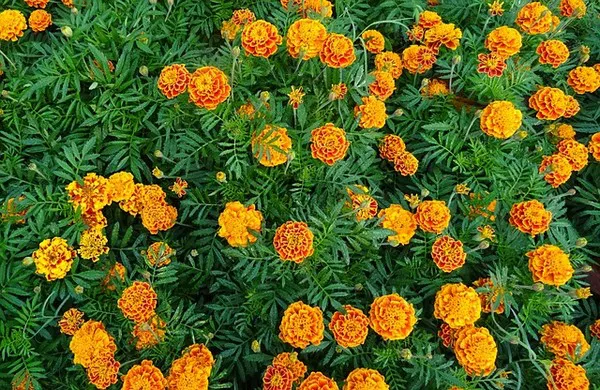The Day of the Dead, or Dia de los Muertos, is a vibrant and deeply rooted Mexican tradition that celebrates the memories of departed loved ones. Central to these heartfelt tributes are the offerings of colorful and symbolic flowers, each carrying profound meanings that pay homage to the spirits of the deceased. Join us as we embark on a journey through the world of Day of the Dead floral offerings, exploring the blossoms that bridge the realms of the living and the departed.
1. Marigolds (Cempasúchil)
Marigolds, known as “cempasúchil” in Mexico, are the quintessential flowers of Day of the Dead celebrations. Their vibrant orange and yellow hues are believed to guide the spirits of loved ones back to the realm of the living. Pervading cemeteries and altars, marigolds are essential in creating the “path of marigolds” leading from the graveyard to the homes, inviting ancestral souls to partake in the festivities.
2. Baby’s Breath (Gypsophila)
Baby’s breath, with its delicate and airy appearance, symbolizes purity and the ethereal nature of the spirits. These small white blossoms are often used to complement the vibrant marigolds, adding a touch of grace and elegance to Day of the Dead altars and offerings.
3. Cock’s Comb Flower (Celosia cristata)
With its vibrant and intricately shaped blooms, the cock’s comb flower embodies the essence of love and affection for departed ancestors. The distinctive appearance of these velvety, brightly colored blossoms adds a unique and captivating touch to the elaborate Day of the Dead displays.
4. Gladiolus
Gladioli, with their tall and graceful spikes of flowers, symbolize strength, integrity, and a deep connection between the living and the deceased. Often used to represent remembrance, these blooms add a sense of dignity and reverence to the Day of the Dead tributes.
5. Carnations
Carnations, with their enduring beauty and wide spectrum of colors, are used to symbolize love, admiration, and gratitude for the departed. Their presence in Day of the Dead altars expresses the deep emotions and cherished memories that persist beyond the physical realm.
6. Chrysanthemums
Chrysanthemums, revered for their longevity and association with death, are often placed on Day of the Dead altars as a mark of respect and remembrance. In Mexico, these blooms represent the cycle of life and death, reminding observers of the interconnectedness of all living beings.
7. Petunias
Petunias, with their captivating array of colors, symbolize the fleeting nature of life and the importance of cherishing each moment. Their presence in Day of the Dead offerings serves as a poignant reminder to embrace the present and honor the memories of those who have passed.
8. Roses
Roses, with their timeless beauty and diverse meanings, hold a place of honor in Day of the Dead celebrations. Red roses symbolize love and respect for the departed, while white roses signify purity and the hope for a peaceful afterlife.
9. Zinnias
Zinnias, with their vibrant and cheerful appearance, represent endurance and lasting friendship. These blossoms are often included in Day of the Dead offerings to convey heartfelt remembrance and the enduring bond between the living and the spirits.
10. Sunflowers
Sunflowers, with their radiant and sun-like appearance, embody warmth and positivity. Placed on Day of the Dead altars, sunflowers symbolize the celebration of life and the belief that the spirits of loved ones continue to shine brightly in the hearts of the living.
Conclusion
In the rich tapestry of Day of the Dead traditions, flowers serve as a bridge between worlds, connecting the living and the departed through vibrant colors and meaningful symbolism. From the iconic marigolds that light the way for ancestral spirits to the delicate baby’s breath that symbolizes purity, each bloom contributes to the deeply meaningful and spiritually rich celebration of Dia de los Muertos. As families gather to honor their ancestors, the language of flowers brings comfort, beauty, and a profound sense of connection that transcends the boundaries of life and death.


